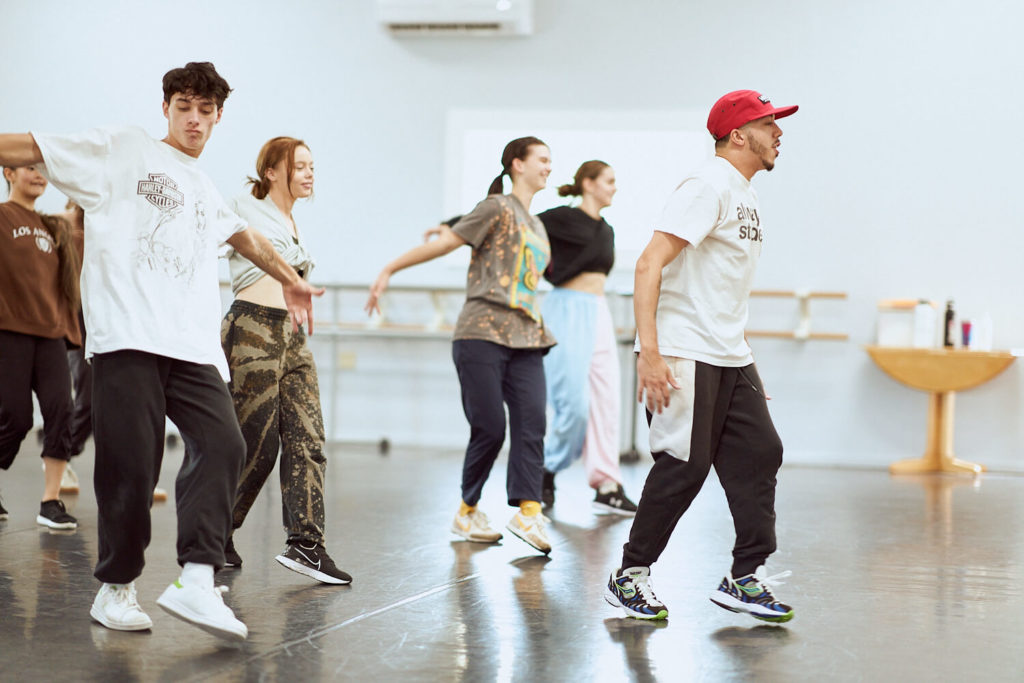Hip-hop dance has changed a lot over the years, coming to encompass a wide variety of styles and moves that all fall under the aegis of the genre. Pinpointing down such a broad category can be difficult, and in doing so can spark many debates about what is and what isn’t hip-hop dance. We’ve put together a brief history of hip-hop dance culture in the hope of providing some clarity, or at the very least to start a conversation.
Pillars of The Streets
Hip-hop dance developed hand in hand with hip-hop culture and music, and it all began in New York City in the 1970s. Early rappers and DJs started codifying the styles and sounds of the beat-driven music and in the process created what would become the four fundamentals of hip-hop: emceeing (or rapping, wordsmith), deejaying (spinning records, deck craft, scratching, fading, and dropping beats), graffiti, and break dancing.
Break dancing was so named by Jamaican-born Bronx hip-hop dancer and pioneer DJ Kool Herc, who dubbed the dancer’s b-boys and b-girls as a shortened version of break boys and break girls. This was a reference to the tracks which he played that contained many deliberate drum breaks to get people dancing. It’s important to note that while break dancing was extremely influential to the development of hip-hop dance, it is now considered to be its own separate genre of dance. Many such street dances at the birth of the New York City hip-hop scene would go on to influence the development of hip-hop dance.
Taking Over
As hip-hop culture grew and became more visible in the 1980s, so too did hip-hop dance. Break dancing had already gained the attention of Hollywood with movies such as Breakin, Flashdance, and Style Wars and through the work of dance troupes like the Rock Steady Crew. The new emergence of music television as a popular medium brought with it highly stylized commercial portrayals of hip-hop dancing that would then break off into a separate genre called jazz funk.
Hip-hop dance eventually turned to the clubs for inspiration, and new moves started developing based on less frenetic action. Instead of just focusing on the competition aspects of breaking or the large group choreography of jazz funk, hip-hop dance became more playful and culturally referential. Individual dances and fads sprung up, with names like the Robocop, the Humpty Dance, and the Cabbage Patch. Hip-hop heads tightened the definition of the genre to allow for these new emerging styles to be brought under hip-hop’s umbrella without explicitly defining the genre. In that sense, it was hip-hop originated as a fusion process that constantly took on new elements without being pigeonholed into stale repetition. Hip-hop music was growing, and with it, the dance moves themselves. Newly established dance styles like popping and locking contributed to the expanding artform and the dance moves multiplied as the genre took on more urban trends and made them its own.
Lights, Camera, Style
As the new dance styles contributed to the evolution of the movement, so too did style and fashion start to make their mark. Designers started producing clothing that was loose and baggy, allowing for a large range of motion to compliment the hip-hop dancers while still looking extremely fresh.
The television show In Living Color debuted in 1990 and with it came The Fly Girls, an all-female dance troupe whose hip-hop and jazz funk stylings, under the careful choreography of actress Rosie Perez, exponentially expanded the audience of hip-hop dance into the mainstream.
With the new clothing and exposure came the final step for hip-hop dance: studio choreography that took hip-hop dance from the streets and into theaters and classrooms around the world. A constantly evolving mix of the freshest styles, cutting-edge dance moves often built on hit club tracks several months before the mainstream caught wind of them.
An ability to redefine itself while still being married to its street dance roots has made hip-hop dance into a uniquely powerful cultural juggernaut. From runways to pop concerts to television contests to backstreet galas, hip-hop dance is a dominating force in the new century.
Explore Hip Hop Dance Classes With CLI Studios
Explore hip-hop dance on your own time from the comfort of your own home with CLI Studios! Perfect for the beginner and advanced hip-hop dancer, take live and on-demand hip-hop classes with the industry’s top choreographers below!







